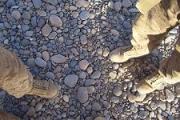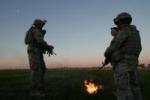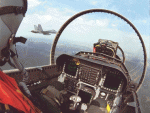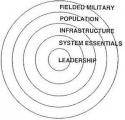Here's to you, soldiers of the 1-17 in Afghanistan
By David Ignatius
Washington Post
Thursday, December 24, 2009; A15
BASE FRONTENAC, AFGHANISTAN--It's a week before Christmas Eve, and the chow hall of this forward operating base north of Kandahar is decorated with twinkling blue and white lights for the holidays. There are posters of Santa and a snowman on the walls, and in the center of the room there's a big sign that exhorts the soldiers: "Enjoy Meal." Christmas will be "a day to take your boots off" for the 800 members of the Army's 1st Battalion, 17th Infantry Regiment based here, says their commander, Lt. Col. Jonathan Neumann. It also will be a day to remember the 21 comrades who have been killed since the battalion arrived in August, and the 41 who have been seriously wounded.
The 1-17 has the grim distinction of having lost more soldiers in action than any other battalion in the Army since Sept. 11, 2001. The men's names are recorded on a concrete slab in the center of the compound, bearing the legend "Fallen But Not Forgotten."
"After a catastrophic incident, you come together and take care of your brothers," says Neumann. "Then you resolve to get back to the mission at hand." Christmas will be a moment to relax -- a day of sports, award ceremonies and a special meal. But because of combat rotation, the battalion will have to celebrate it over a series of days.
I traveled here with Adm. Mike Mullen, the chairman of the Joint Chiefs of Staff, who was making a holiday visit to the war zone. Amid the twinkling lights of the mess hall, he addressed the soldiers of the 1-17, their automatic rifles stowed under the meal tables.
"I know you've been in a very tough fight, and I'm aware of those you've lost," Mullen told the troops, assuring them: "We have the right strategy." He met afterward with a small group from units that had been especially hard hit.
This holiday season is a good time to remember these faraway soldiers. The debate over Afghanistan has provoked strong feelings, pro and con. But the country seems united in its appreciation for a military that has been suffering the stresses of war, without complaint, for the past eight years.
Soldiers are usually stoics. But the members of this battalion seem highly motivated. The sergeant of a platoon that lost nine men in two weeks asked to reenlist after a memorial service for his buddies. On the day Mullen visited here, the admiral reenlisted 10 soldiers.
The base lies in a dusty plain surrounded by jagged peaks. Nearby is the Arghandab River, which feeds a lush area of orchards and mud-walled agricultural plots that the soldiers call "the green zone." That's where the Taliban fighters hide and where the battalion has fought some of its toughest battles.
When the battalion arrived on Aug. 7, about 150 Taliban fighters were well entrenched. Neumann says his soldiers had to "fight our way to the people." By early November, the situation had begun to change. The Taliban's cadres had been killed or had scattered, their supply caches had been destroyed -- and the local population began providing intelligence.
That's the model the Obama administration hopes will be replicated in other population centers as the United States sends in 30,000 more soldiers. One thing that's painfully clear when you visit this base is that success won't come cheap. The new strategy will mean more battles, more targets for roadside bombs, and more dead and wounded American soldiers.
The White House debate over Afghanistan took place as the battalion was suffering its worst casualties. The policy-wrangling directly affected these troops, but it became "white noise," says their commander. "We knew there was a debate in Washington, but there's always a debate." The 17th Infantry has a history of tough fights. Its nickname, the "Buffaloes," dates back to the Korean War, where it fought in the battle of Pork Chop Hill, a bloody push to win territory that arguably had little strategic value. But even that conflict was easier to measure than the one the Buffaloes are fighting now. "Here, it's one small incident at a time," says Neumann.
There's a scraggly Christmas tree atop one of the prefabricated trailers where the soldiers of the 1-17 bunk when they're not out on missions. It's not a place any of us would want to spend the holidays, but in conversations with soldiers here, I didn't hear any complaints.
In this season of peace, here's a holiday toast to people everywhere who don't have that blessing today.
*****
Today SWJ Blog has a commentary piece from Wired which discusses the recent article on the 1/17th in
Army Times. Click on the link to read it.
http://www.wired.com/dangerroom/2009...power-playbook








 ), and I invite you to an exchange of PMs to learn more about what you know. I'm also impressed if you in fact generated a mod for CC2. Thumbs up for that!
), and I invite you to an exchange of PMs to learn more about what you know. I'm also impressed if you in fact generated a mod for CC2. Thumbs up for that!





Bookmarks